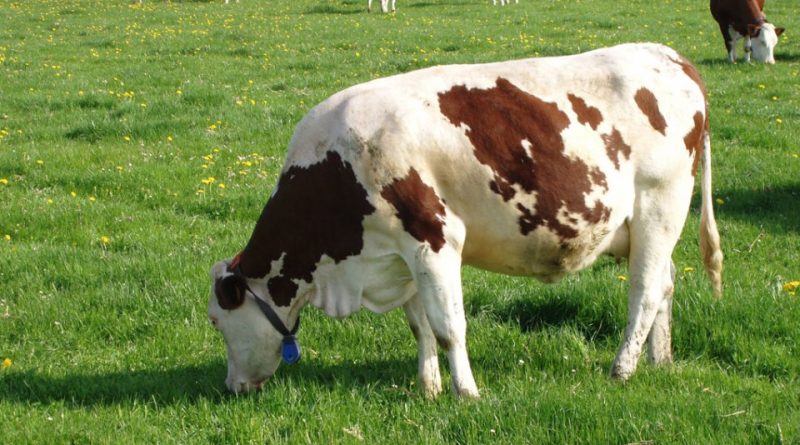Montbéliarde
Montbéliarde
The Montbéliarde breed is a bovine breed (Bos taurus Linnaeus, 1758) bred above all in the south-eastern regions of France, with a dual aptitude for the production of meat and milk.
Systematics –
From a systematic point of view, it belongs to the Eukaryota Domain, Animalia Kingdom, Subgenus Eumetazoa, Superphylum Deuterostomia, Phylum Chordata, Subphylum Vertebrata, Infraphylum Gnathostomata, Superclass Tetrapoda, Class Mammalia, Subclass Theria, Infraclasse Eutheria, Superorder, Laurasiatheria, Clade Ungulata, Order Artiodactyla, Suborder Ruminantia, Infraordine Sheep, Family Bovidae, Subfamily Bovinae and then to the Genus Bos, to the Species Taurus and to the Montbéliarde.
Geographical and area distribution –
The Montbéliarde is a breed of red dairy cattle from the Montbéliard area, in the department of Doubs, in the Burgundy-Franche-Comté region of eastern France. Today it is mostly bred in the south-eastern regions of France and also exported to Algeria.
Origins and History –
The Montbéliarde cattle breed is native to the Principality of Montbéliarde in eastern France. This breed derives from the Simmental Switzerland (like others belongs to the group of the Red Spotted Rays derived from the Simmental).
At the beginning of the 18th century some breeders from the Bernese Oberland settled in the Principality of Montbéliarde, bringing with them subjects of the Simmental breed. The breed was formed with the contribution of these imported subjects and from local breeds, among which above all Tourache and Fémeline.
The selection activity of this breed was mainly carried out to improve milk yield.
The name Montbéliarde was first used by Joseph Graber in 1872, when he exhibited a group of cattle in the Langres agricultural competition. Before then this new breed was referred to as the Franco-Swiss breed because of the presence of autochthonous multi-purpose breeds such as Tourache and Fémeline.
We have to wait until 1889 when the breed was officially accepted and the genealogical book was established. After 1900, many cattle were sold in the Occitania region (formerly Midi-Pyrenees) and in Algeria.
In the 1970s, crosses between the Montbéliard and the Red Holstein were also operated. At the same time crossings were made with the Fleckvieh bulls but with poor results of improvement of the new individuals.
From 1980 a further selection was made to allow this breed a good conversion yield of feed and pastures.
Furthermore, in the 1990s, the Montbéliarde cattle were used to breed red Danish and Vorderwalder cattle breeds.
Morphology –
The Montbéliarde is characterized by animals with spotted red mantle tending to the Fromentino (more vivid red than the Simmental) with a white head (with rare spots on the same) with red ears, ventral parts and generally white limbs, short horns and yellow claws waxy. The mature cows weigh from 600 to 700 kg and reach a height of about 145 cm at the withers; mature bulls weigh from 900 to 1,200 kg.
Production aptitude –
This breed is mainly used for milk production and in particular for cheese making. The milk is in fact particularly suitable for cheesemaking due to a high frequency of casein kappa BB, which gives higher cheese yields.
Although Montbéliarde cattle are mainly dairy, they have better meat characteristics than Holstein cattle. On almost 400 thousand Montbéliarde cows recorded in France there was an average adult lactation of 7,486 liters with 3.9% milk fat and 3.45% protein. Some herds are fed on a hay-based diet to produce milk with a greater predisposition to cheese making.
On the market, cows and calves are worth more than Holstein. The breed has spread to many countries and is becoming popular by using it for crossbreeding with the Holsteins in order to improve longevity and fertility.
Guido Bissanti
Authorities-
– Wikipedia, the free encyclopedia.
– Roberto Parigi Bini, 1983. Cattle breeds, Pàtron editore, Bologna.
– Daniele Bigi, Alessio Zanon, 2010. Atlas of native breeds. Cattle, horses, sheep and goats, pigs bred in Italy, Edagricole-New Business Media, Bologna.

